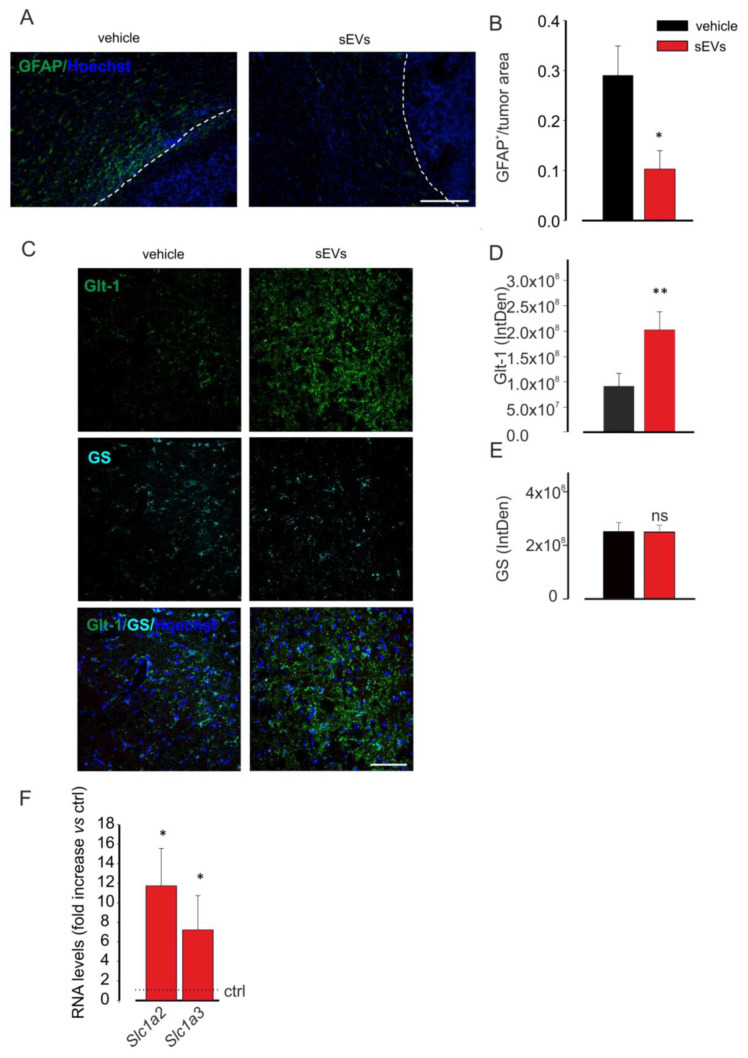Figure 2.
Microglia-derived sEVs effects on astrocytes. (A) Representative immunofluorescence analysis for glial fibrillary acidic protein (GFAP in green; Hoechst in blue) of coronal brain sections of GL261-bearing mice vehicle treated (on the left) or treated with BV2-derived sEVs (on the right). The tumor region is on the right of the dashed line. Scale bar: 20 μm. (B) Quantification of (A). Data are expressed as the signal coverage area of GFAP normalized by tumor area (GFAP+/tumor area ± SE; N = 3; * p ≤ 0.05; by using Student’s t-test). (C) Representative immunofluorescence analysis for Glt-1 (in green) and glutamine synthetase (GS in light blue; Hoechst in blue) of coronal brain sections of GL261-bearing vehicle treated or treated with BV2-derived sEVs in the peritumoral area. Scale bar: 20 μm. (D,E) Quantification of (C). Data are expressed as mean intensity (IntDen) ± SE; N = 3; * p ≤ 0.05; ** p ≤ 0.001; Student’s t-test. (F) qPCR of Slc1a2 and Slc1a3 genes in primary astrocyte cultures which were untreated (ctrl) or treated with sEVs. Data are the mean ± SE of fold increase vs. ctrl, normalized on Gapdh (used as a housekeeping gene); N = 6; * p < 0.05 vs. ctrl; by using the Mann–Whitney rank sum test.

